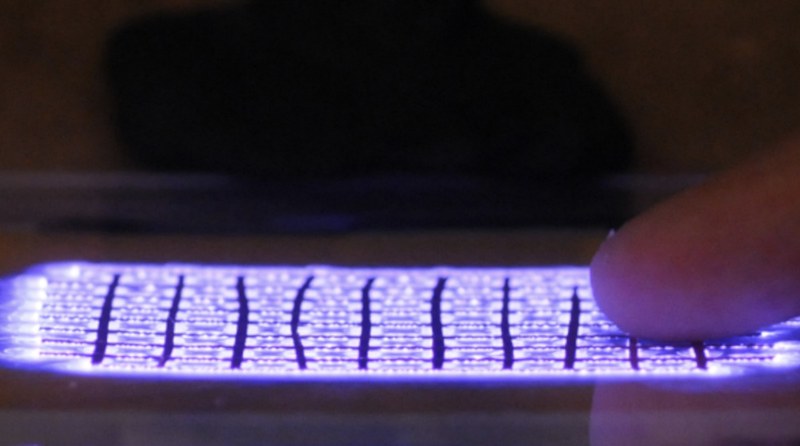Yplasma Applies High-Voltage Electric Fields Using Plasma Actuators
Jul 31, 2024
Yplasma is a spin-off from the National Institute for Aerospace Technology of Spain (INTA) located at Parc UPC.
YPlasma is an innovative company that emerged from the National Institute for Aerospace Technology (INTA) and was established as a spin-off in February 2024, accelerated by Mobile World Capital Barcelona’s “The Collider” programme. It was recently incubated by the ESA (European Space Agency) at the RDIT building of Parc UPC on the Baix Llobregat Campus in Castelldefels. YPlasma’s core offering is its patented plasma actuator technology (patent WO 2022/179907 A1), originally developed for the aeronautical sector and now intended for a variety of terrestrial uses.
The technology has been developed over 10 years by INTA researchers Antonio Conesa (INTA Aerodynamics Director) and Mario Sánchez (Aeronautical Engineer and CTO). The research process has led to the development of various types of plasma actuators for diverse applications, resulting in the aforementioned patent and others currently awaiting protection. Due to the researchers' interest in bringing the technology to market, they participated in Mobile World Capital Barcelona’s “The Collider” programme, where they joined forces with David Garcia, a serial entrepreneur in 'hard tech' projects, to finally launch the company in February 2024.
A plasma actuator is a device that uses atmospheric pressure electrical discharges to manipulate flow structures around surfaces exposed to fluid flow. This technology converts electrical energy into a physical force without moving parts by using a plasma state to generate an ionic wind and modify aerodynamic and thermal management properties. Specifically, commonly used actuators are of the surface dielectric barrier discharge (SDBD) type, consisting of two electrodes separated by a dielectric material. When high-voltage alternating current is applied, it ionises the air near the electrodes, creating a force that can alter flow patterns such as reducing drag or controlling boundary layer separation. These actuators are known for their simplicity, rapid response, lightness, and versatility in applications ranging from de-icing to flow control in various industries, particularly in aerospace and wind energy.
YPlasma's actuators are designed to offer a variety of integrated functions, making them particularly useful in the context of wind turbines. Their specific capabilities include de-icing, anti-frost properties, aerodynamic profile modification for aerodynamic flow control, ice detection, heat ventilation on any surface, and the ability to combine multiple functions into a single device. This allows for integrated and versatile operation, simplifying maintenance.
These integrated functions make YPlasma's actuators an advanced solution for improving the reliability and efficiency of wind turbines, especially in locations with extreme or variable climatic conditions.
Key pilot projects, such as the planned collaboration with the Sotavento wind farm (owned by Enel and Iberdrola), will serve as a testing ground for YPlasma's technology capabilities, demonstrating real benefits. Additional agreements are also in place with Total Energies and Plenium Partners to test the technology. YPlasma aims to develop these pilot projects during the 2024-2025 period.
The versatility of YPlasma's plasma actuators extends far beyond the wind energy industry. For satellites, they offer a maintenance-free and efficient propulsion system alternative for low orbits, protected against extreme space temperatures. In the aviation sector, these actuators can dramatically improve aerodynamic efficiency, leading to significant fuel savings and emission reductions. Our technology has been selected by Airbus as their top choice after an extensive evaluation of over 80 technologies. Furthermore, they can play a key role in thermal management for applications in data centres, automotive, and energy storage industries, enhancing safety, performance, and longevity. YPlasma is also venturing into agriculture, where its technology promotes sustainable plant growth and offers a chemical-free method for environmental sanitisation.
YPlasma is led by David Garcia, CEO and Industrial Engineer from UPC with an MBA from ESADE, who has a 15-year track record leading 'hard tech' and sustainability start-ups such as QEV Technologies and Quimera Energy. Antonio Conesa, Head of Aerodynamics at INTA, and Mario Sanchez, CTO and co-authors of the patent, bring deep expertise in aerodynamics research and plasma technology with a history of significant discoveries.
As YPlasma builds on its initial successes in wind energy pilots and seeks opportunities in other sectors, it aims to serve as a model for innovation, utilising the transformative capabilities of plasma actuator technology to propel various industries towards a more efficient and sustainable future.

Share: